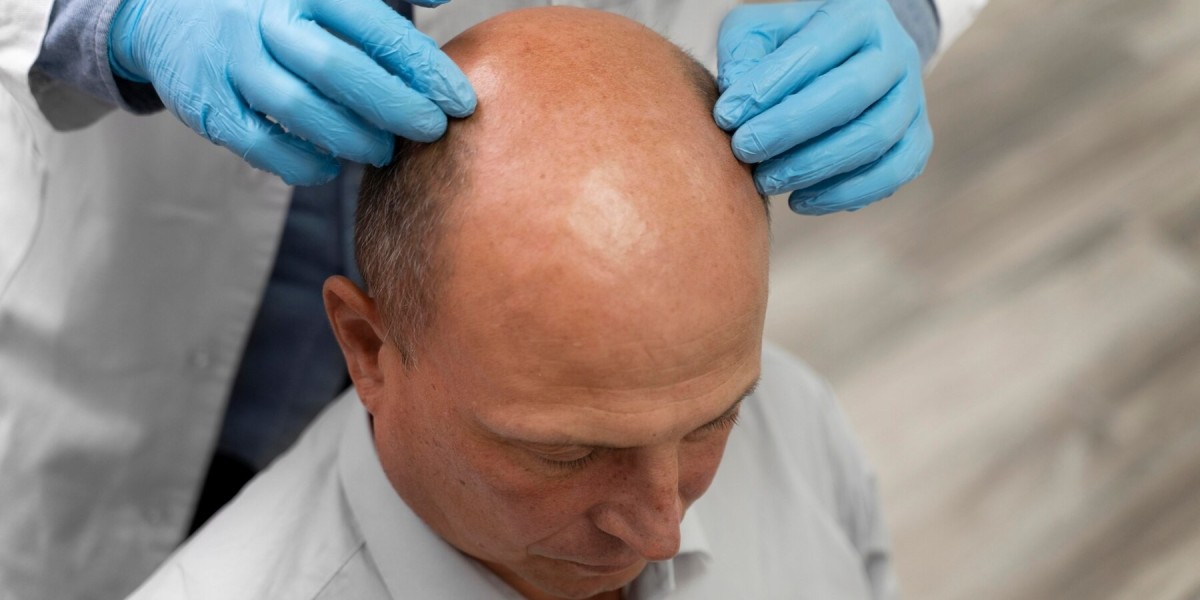When we face a problem, it's best to have the most updated information to help us make the right choices, no matter the issue. If your concern is cosmetic, you need to know about current and effective ways to treat cosmetic issues.
If you’ve noticed thinning or balding areas on your scalp, don't stress. Hair loss is a common concern among men. Most have some degree of hair loss by the time they're in their mid-thirties. Only 15% of the male population doesn’t have an issue with hair loss or thinning by the age of 50. That's a whopping 85% of men that deal with this problem.
But what about hair restoration? How can you create a healthy scalp that will produce equally healthy growth? In the past, the only way to get more hair on your scalp was to have hair transplantation surgery. However, with the interest and popularity of minimally invasive cosmetic treatments came the practice of PRF hair restoration treatment.
What Is PRF? How Does It Produce Hair Growth?
PRF (platelet-rich fibrin) is a treatment that starts with a blood sample. The rich platelet supply in this treatment–plus the white blood cells and stem cells–encourages the development of new hair follicles and can also strengthen existing hair. Your blood sample creates the basis for the fibrin that leads your scalp to regenerate damaged cells. These renewed cells can then produce new hair growth.
The Differences Between PRF And PRP
While both platelet-rich plasma and platelet-rich fibrin may sound like the same treatment, their small differences can have big impacts on your treatment.
Both treatments require your provider to take a blood sample, usually from your arm. PRF requires a smaller amount of blood, which may make it an easier option for those with an aversion to needles or blood.
Your provider then places the blood sample in a centrifuge and spins it. PRP spins faster to separate all elements, while PRF spins slower to keep white blood cells and stem cells intact. The slower speed may also prevent cell damage as the blood completes its time in the centrifuge.
PRF and PRP are both effective therapies for hair restoration, though some studies have shown that adding white blood cells and stem cells has a greater impact.
Steps To Take Before Your PRF Treatment Session
With a PRF session, your blood is the treatment. Leading up to your appointment, you’ll want to do everything you can to make sure your treatments deliver great results. The best way to do that is to keep yourself healthy and follow tips and advice from your provider. After your consultation, your provider will give you a list of instructions to follow before your injections. This list may include things like:
Avoid alcohol for several days leading up to your treatment.
Refrain from smoking for a week or more before your session.
Limit your caffeine intake for a few days, and don’t drink any the day of your PRF session.
Don't take NSAIDs like aspirin or ibuprofen for a week or two beforehand (you can take Tylenol or other acetaminophen if necessary).
Avoid blood thinning medications, whether prescriptions or natural supplements like fish oils.
Establish a healthy diet and exercise routine before your treatment to help your body be in prime shape for your session.
In the days leading up to your PRF session, drink plenty of water.
Before your treatment, eat a light meal or snack and make sure your body is hydrated.
What To Expect During Your PRF Treatment
By the time you’ve scheduled your treatment session, you’ve already done the hard work of selecting a facility, provider, and treatment option. Compared to these steps, PRF treatment is a pretty simple process that doesn’t require a ton of effort on your part. Other than avoiding a few things, eating healthy, and exercising, there’s very little prep for you to do before your PRF treatment.
Your provider will start your session with a blood draw. Then, while your blood spins in the centrifuge, the provider will begin to numb the balding or thinning sections of your scalp so you won't have to worry about pain during your injections. After they've completed your treatment, your provider will give you post-session instructions.
PRF Treatment Post-Session Tips
Be sure to follow the after-session instructions your provider gives you. That way, you can give your scalp the best chance to produce great results. Some common instructions after your PRF session are as follows:
Although it might be tempting to touch your scalp or massage it, especially if it's still feeling a little numb from the analgesic cream, you should avoid touching it for about a day after treatment so you don't interfere with your results.
You can apply hair products after 6 hours, but the longer you wait to touch or manipulate your hair or scalp, the better.
Keep avoiding alcohol, smoking, and caffeine for at least three days after your treatments (hey, we know how hard it is to cope without coffee, but it's in the name of helping you get the most of the time, energy, and money you spent for your PRF session).
You can wash your hair the following day using a mild pH-balanced shampoo, but don't apply too much pressure to your scalp.
Stick to Tylenol or acetaminophen while your scalp is still healing from injections. Pain medicines like Advil and Aleve can cause bleeding and bruising.
If you notice swelling after your injections, don't stress. You can apply a cold compress or washcloth to the area, but don't use ice or heat; they can cause irritation and damage your results.
Stay out of the sun, or at least keep your scalp covered for several days after your injections. A sunburn on your head would not feel great as your scalp heals, nor would it be good for your hair restoration efforts.
Keep your exercises (other than walks) to a minimum, especially during the first several days after your treatment.
Drinking water is always a good idea. Whether you prefer the sparkling variety or a nice tall glass of filtered ice water, it doesn’t matter–as long as it's H2O, you're good to go!
An Overview Of What To Expect Before, During, And After Your PRF Session
Once you decide on PRF, you need only avoid products and medications that could interfere with your results or cause bruising or bleeding during your treatment. Also, make sure you're hydrated and have something in your stomach to make the process less stressful.
During your session, you should experience little pain. After your quick blood draw, your provider will apply a numbing cream to the areas where you'll receive injections.
After your session, continue to avoid blood thinning medications and supplements, caffeine, alcohol, and smoking. Keep exercise and sun exposure to a minimum for a short time. Drink plenty of water and only apply gentle pressure to your scalp when washing your hair. All these things will give your scalp time to heal and start your hair restoration journey.









